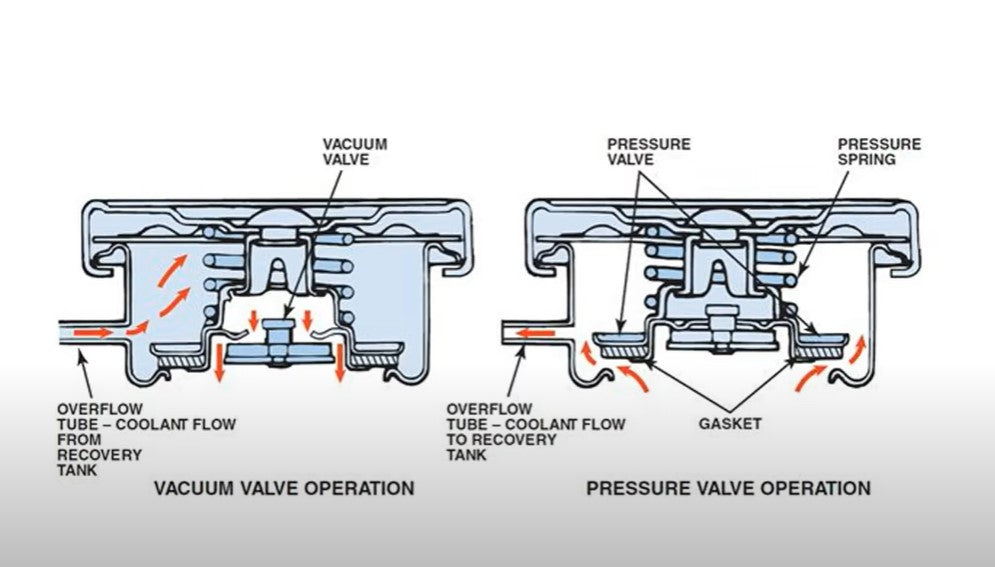Most cooling systems from the 1950s onward are pressurised. As they heat up, the coolant and air above it in the radiator expands. The pressure builds up and suppresses the boiling of the coolant. Water can be taken to about 107°C at 4psi above atmospheric pressure and to 121°C at 15psi above.
The cap regulates the maximum pressure, preventing damage to the hoses and radiator. After turning the engine off, the system cools and the coolant contracts significantly. The cap therefore has a return valve that admits air from the atmosphere or coolant from an expansion tank, if fitted.
You may in time have problems with your cooling system it may overheat, this may be a problem with the spring as it may have weakened rusted over time.
The cap leaks water or loses pressure this could be a problem with the rubber seals within the cap and the cap will need replacing.
We have in our shop a wide range of pressure caps ranging from 4lb to 20lb various sizes small Japanese to Large commercial the most common standard short reach.
All our caps at complete radiator supplies are British Made and are of the highest quality.

